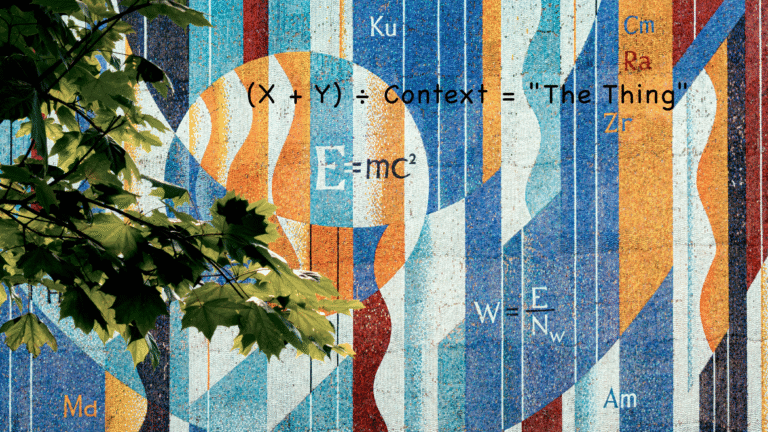How APEST-11D™ Unlocks the True Complexity of Fivefold Ministry Gifts
During the final session of developing APEST-11D™, my team made a simple mistake that changed everything. While creating examples of different gifts in action, they unintentionally reinforced a common misconception—one APEST-11D™ was designed to correct.
Breaking Free from "Gift = Behavior" Thinking
Looking back at their example with James, we can see how ridiculously linear their thinking was: Teacher → thinks like a teacher → talks like a teacher → acts like a teacher.
As many of you may know, real ministry doesn’t work that way!
Insight: APEST-11D™ assessment can reveal something far more dynamic: James (Primary: Teacher) might actually:
- Be motivated by an evangelist’s passion for connecting
- Communicate with a prophet’s powerful imagery
- Create nurturing environments like shepherd’s
- Build systems like an apostle
APEST Gifts Operate Simultaneously, Not in Isolation
Just when they thought they understood, another layer emerged. So, in a single ministry moment, James isn’t switching between gifts like changing hats. At higher levels of maturity, he’s actually expressing multiple gifts simultaneously:
- Breaking down complex concepts (teaching)
- While creating emotional safety (shepherding)
- While speaking prophetically into situations (prophetic)
- While building new ministry systems (apostolic)
Insight: APEST-11D™ includes APEST Maturity Stages™ and Operational Modes™ to capture this rich interplay of gifts.
Dimensional Categories™: The Hidden Strengths in Your Gifts
After the first two breakthroughs, we thought that was it, but the framework had one more surprise that left them shaking their head at how much they missed after hours of working together. What was that breakthrough?
Take Sarah:
- Primary Gift: Prophet
- Secondary: Apostle
- Third: Evangelist
- Fourth: Shepherd
- Fifth: Teacher
It seems straightforward, but her Shepherding gift becomes primary in certain contexts. Without Dimensional Categories™, we’d miss how her fourth-ranked gift dominates in specific situations.
Insight: Why This Matters? These three breakthroughs reveal why traditional APEST assessments, while valuable to assess the presence of APEST gifts, don’t yet fully capture the user-specific dynamics across ministry context:
- They don’t yet asses if, how, why, and where a “teacher” might express evangelical qualities.
- They don’t yet evaluate how mature leaders blend multiple gifts simultaneously.
- They don’t yet capture how different dimensional categories bring out different primary gifts.
Why Naming These Breakthroughs Matter
APEST-11D™ isn’t just another assessment tool. It finally gives us language and framework to describe what’s actually happening in the ministry context, in all its magnificent complexity. It captures the true sophistication of how APEST gifts function in practice rather than boxing people into simplified categories.
Here are the three breakthroughs of our APEST ministry assessment contributions:
- Broke the “Gift = Behavior” Chain:
- Old thinking: “If you’re a teacher, you must always think, act, and operate like a teacher.”
APEST-11D™ reveals: Your primary gift doesn’t dictate every aspect of how you function. A teacher might be motivated by an evangelist’s passion, communicate with prophetic clarity, or lead with a shepherd’s care. Instead of a rigid formula, gifts interact dynamically across the 11 dimensions.
- Old thinking: “If you’re a teacher, you must always think, act, and operate like a teacher.”
- 2. Multiple Gifts Operating Simultaneously:
- Old thinking: “Leaders switch between different gifts one at a time.”
APEST-11D™ shows: Mature leaders don’t just swap hats; they wear multiple at once. In a single moment, a leader might teach, shepherd, and build apostolic structures all at the same time. This fluidity is key to real-world ministry impact.
- Old thinking: “Leaders switch between different gifts one at a time.”
3. APEST Dimensional Categories™ Reveal Hidden Gift Strengths:
- Old thinking: “Your gift ranking is fixed across all situations.”
- APEST-11D™ shows: Your fourth-ranked gift might actually be your primary expression in certain dimensional categories. Example: Sarah’s fourth-ranked shepherding gift becomes primary in Complex Interactions. Without breaking down the 11 dimensions into categories, we’d miss these crucial patterns of gift expression.
Why These advancements Matter
Traditional APEST assessments have paved the way, and we want to contribute to the advancement of APEST Fivefold Ministry assessments by showing:
- How different gifts shape motivation and expression
- How mature leaders blend multiple gifts in real time
- How situational factors shift primary gift expression
APEST-11D™ isn’t here to replace existing assessments but to build upon them, offering a framework that captures the true complexity of fivefold ministry in action.
APEST-11D™ technical details are available in our white papers:







